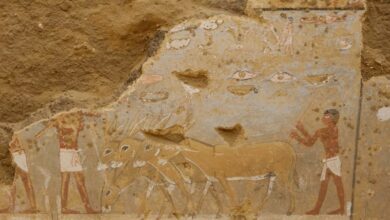
A new study analyzed mummies of children dating back to ancient Egypt and found that anemia was a common disease back then.
The researchers used computed tomography (CT) to non-invasively examine the mummies. They discovered that a third of those children had signs of anemia, and found evidence of thalassemia in one case as well, according to an IFLScience report.
To determine the extent of the disorder among children from ancient Egypt, researchers examined 21 ancient Egyptian mummies using CT scanning to identify skeletal abnormalities commonly associated with anemia, such as an enlargement of the cranial vault (the part of the skull that contains the brain).
The ages of the mummies at death ranged between about one and 14 years old.
Between seven to 33 percent of the study samples showed pathological enlargement of the cranial vault, suggesting anemia.
The study authors say the prevalence of this condition may be related to risk factors, such as low iron intake due to poor diet, chronic gastrointestinal blood loss and decreased absorption, both of which are caused by parasites and inflammation caused by chronic infections.
Despite this evidence, the researchers say it remains unclear whether these children died of anemia, a combination of diseases, or some other condition.
However, those with anemia were the lucky ones compared to one of the samples, who appears to have been born with a set of genetic abnormalities that doomed him from birth.
The researchers reported an excess of bone marrow throughout the child’s skull and facial bones, pointing out that he may have been suffering from a congenital condition called thalassemia, due to his inability to produce hemoglobin.
The disorder can now be successfully treated with blood transfusions and chelation therapy.
Yet such treatments were not available back then, leading the researchers to believe that the child may have suffered from severe anemia and structural changes resulting from the expansion of the bone marrow.
They also indicated that he might have had thalassemia which causes “growth retardation, pallor, jaundice, poor musculature, hepatosplenomegaly, masses developed from extramedullary hematopoiesis, and early death, often in childhood.”
The same boy was also found to have an unusually large tongue.
According to the researchers, this may be a sign of another genetic condition called “Beckwith-Wiedemann syndrome”, which causes swelling in certain parts of the body.




